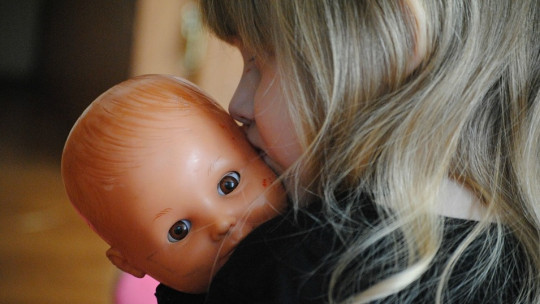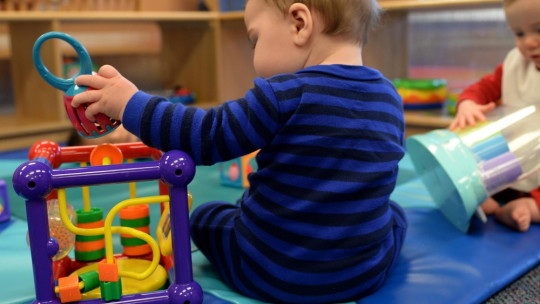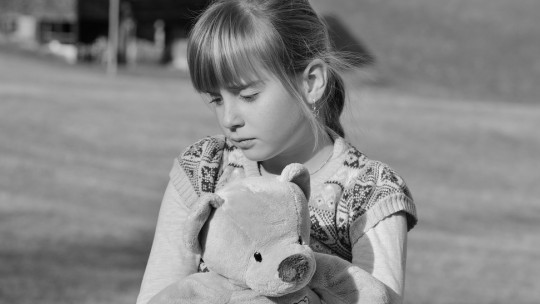For millennia, societies have made boys and girls, those members of humanity who belong to the new generations, clear about their gender from the first years of life. This, among other things, It is done through play styles and toys
For example, until the mid-20th century, most toys indicated on their boxes which of the two sexes the product was intended for, something that changed with the arrival of second and third wave feminism, between the 1970s and the 1970s. 90. Today, however, toys continue to have a strong gender load. It is natural to associate action figures for boys and kitchen games for girls For example.
But… does this make toys sexist? Could it be that the existence of this role distinction causes inequality to appear? There are now good reasons to think that Yes, sexist toys do exist, and they especially target girls
Sexist toys and gender burden
The type of toys that boys and girls use does not obey a causal differentiation. In the vast majority of cases, these games They are a reflection of gender stereotypes For example, girls are given games that deal with baby care, the importance of aesthetics and personal image, or household chores, while boys are given action figures and games that have It has to do with dealing with imaginary situations that, if real, would be scary, violent or disgusting. Now… is this because there is a genetic predisposition that being of a certain sex attracts certain games and not others, or is it all due to the effect of culture, what society teaches us during childhood?
From what has been seen, there is evidence that part of these preferences for gender-stereotypical toys is due to biological factors, not cultural ones. For example, it has been seen that children between one and two years of age, a time when they are not yet socialized in a group, already prefer toys that are associated with their gender. Furthermore, in cases of some diseases that alter girls’ hormonal levels, making them more “masculine”, their preferences for toys also shift more towards the masculine.
However, These differences between boys and girls do not have to be very profound
The influence of the environment
It must be taken into account that in the majority of experiments in which the reaction of children to toys that do not correspond to their gender is explored, we work with specific toys, with specific properties. In these situations, the effects of hormonal differences, which are broad, can seem very concrete, and falsely reinforce overly rigid gender roles.
For example, just because children prefer to play with action figures does not mean that they are attracted to action figures. that category of entertainment we call “action figures” , but there is something about those objects that seems interesting to them. The possibility of fantasizing about risky situations is one of them.
But violent situations (those with which we usually associate play with action figures) are not the only ones in which risks are taken and excitement is felt in the face of danger. In fact, it is entirely possible that many of them are not associated with masculinity.
On the other hand, it has been seen that men are generally slightly better than women in tasks involving spatial processing , and this is also noticeable in the use of toys. Boys tend to prefer more elaborate puzzles than those played by girls, and these toys have to do with cognitive skills related to spatial thinking.
However, it has also been seen that fathers and mothers encourage children more when they play these kinds of games, and do so less when the little ones do it. It may seem unimportant, but if this social asymmetry happens at such an early age, can leave a mark on people’s mental development
We see, therefore, that although there seem to be hormonal differences that influence the preference for toys depending on the sex to which one belongs, this is interpreted as if it were the gender load of these games, and not the situations to which they give rise, the that make them tend to entertain themselves with some things and they tend to entertain themselves with others.
Girls are at a disadvantage
How does this affect girls? Basically, it reinforces strongly established gender roles that put women at a disadvantage. For example, many of the highest-paying professions are closely related to spatial reasoning, and if children are more encouraged to play with toys that promote this skill, These will have an advantage when it comes to filling engineering positions
On the other hand, if it is assumed that since children have a predilection for action figures, women must be assigned to the “safe” sphere of the domestic, their existence will be more similar to that of a pet than to that of a person with the capacity to be independent.
In short, the effect that sexist toys have on girls is the power to pigeonhole them into roles that have been created by society and that are given a priori: it is enough to match certain characteristics related to this type of role, for I know of course that the entire personality of that girl (future woman) can be summed up by “the feminine” The consequences of this are, ultimately, more sexism and more chances for more girls to be pigeonholed into that lifestyle.









